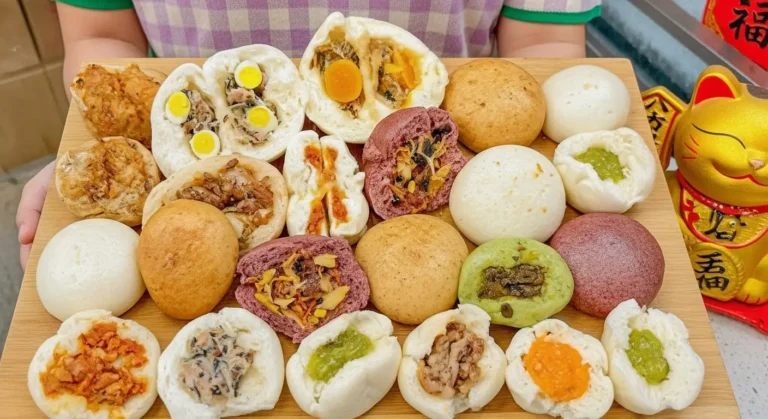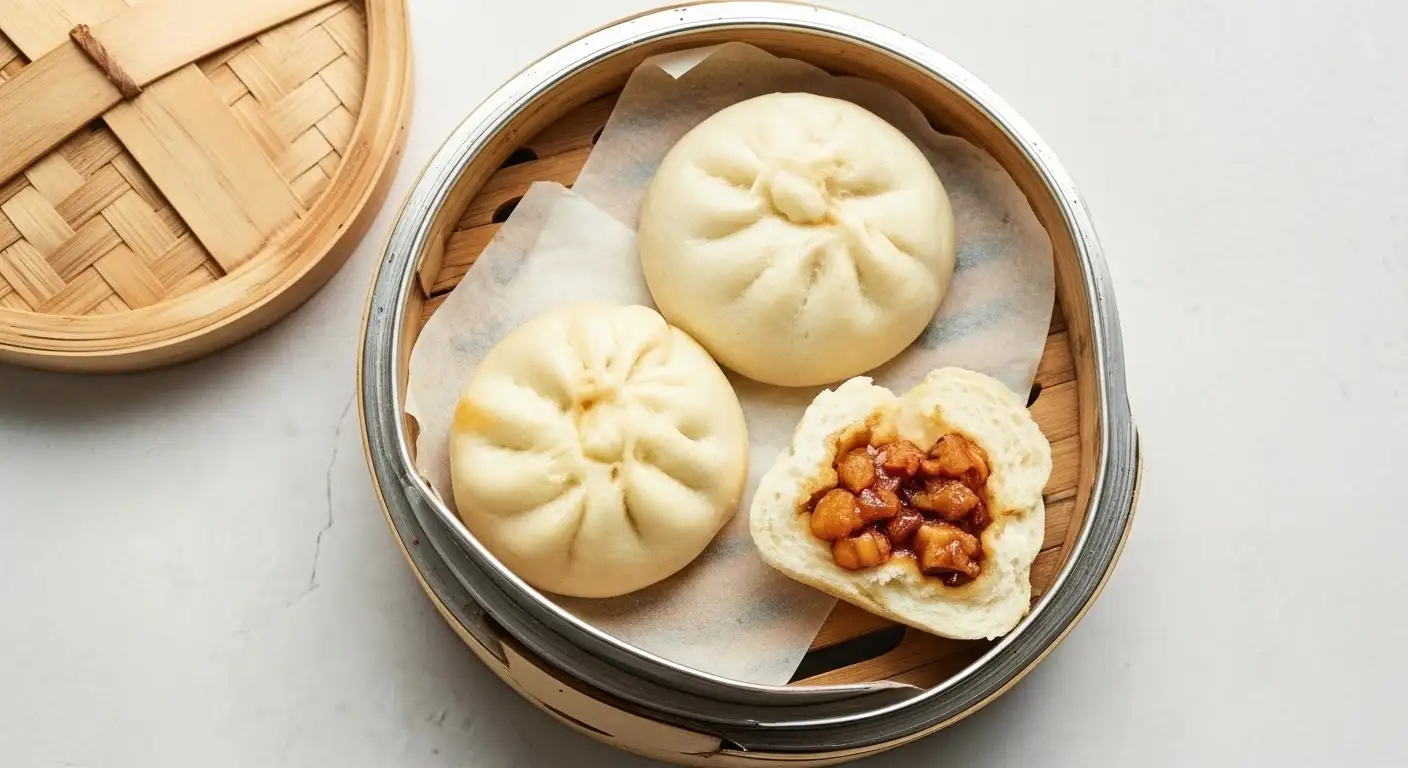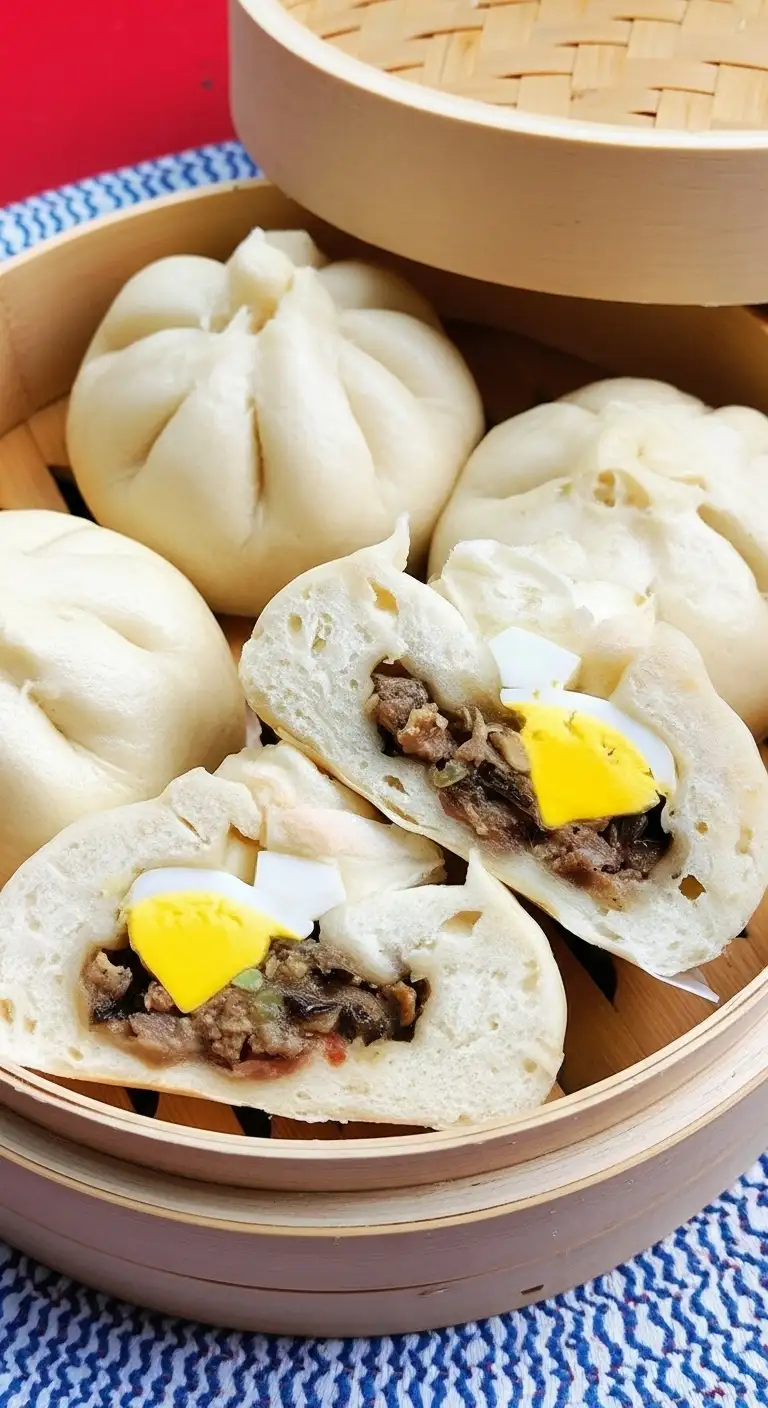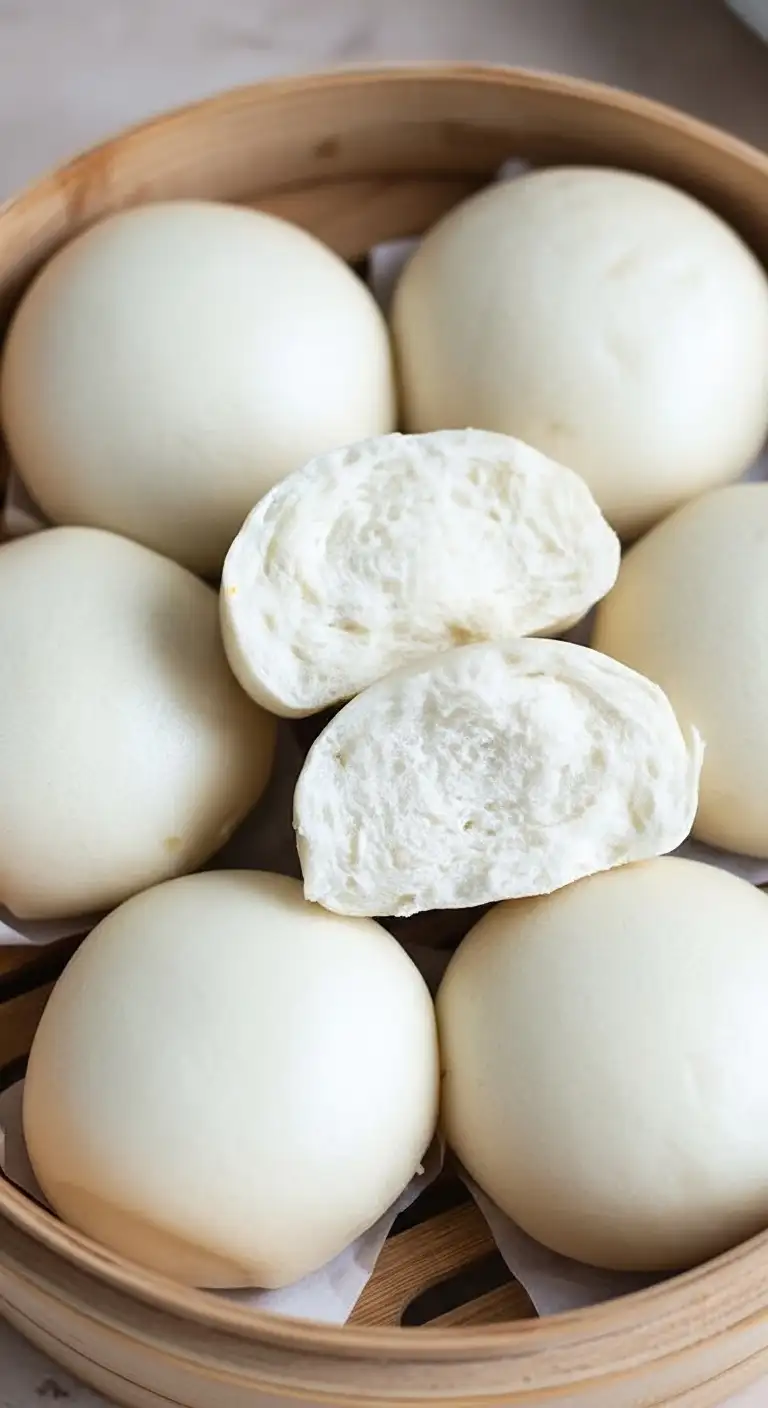Bánh Bao (pronounced “Bahn Baow”) is Vietnam’s beloved version of the Chinese baozi, or steamed bun. Far from being a mere imitation, the Vietnamese adaptation has evolved its own unique identity, resulting in a large, fluffy, and hearty bun that serves as a perfect portable meal or satisfying snack.
The name itself is simple: Bánh means “cake” or “bread,” and Bao means “to envelop” or “bun.” This dish is a culinary staple, cherished across the country for its soft texture and rich, savory filling.

Bánh Bao: The Basics
The Dough: The signature characteristic of Bánh Bao is its dough. It is made from wheat flour, yeast, sugar, and milk (or water). The dough is kneaded until smooth and allowed to rise, resulting in a soft, slightly sweet, and famously fluffy white exterior. A dash of vinegar or lime juice is often added to the steaming water to help the bun maintain its pure white color.
The Classic Filling (Bánh Bao Nhân Thịt): The most common and iconic filling is a savory mixture of:
Seasoned ground pork or chicken.
Finely chopped onions, wood ear mushrooms, and sometimes glass noodles.
A piece of Chinese sausage (lạp xưởng), sliced.
A segment of a hard-boiled egg (often a whole quail egg or a quarter of a chicken egg).
The Cooking Method: The assembled buns are placed on a small square of parchment paper (to prevent sticking) and steamed until they are puffy, hot, and cooked through.
Varieties of Bánh Bao
While the savory pork version is king, the versatility of the fluffy dough has led to several popular variations:
| Variety Name | Main Filling | Flavor Profile |
|---|---|---|
| Bánh Bao Nhân Thịt | Ground pork, Chinese sausage, hard-boiled egg, mushrooms. | Savory and Umami-Rich. The quintessential classic, often seasoned with fish sauce, oyster sauce, and black pepper. |
| Bánh Bao Chay | Tofu, mixed vegetables (carrots, peas), wood ear mushrooms, and glass noodles. | Vegetarian/Vegan. Seasoned with soy sauce, sesame oil, and ginger, offering an earthy, plant-based alternative. |
| Bánh Bao Xá Xíu | Char Siu Pork (Chinese BBQ pork). | Sweet and Tangy-Savory. Inspired by Cantonese cuisine, the filling features diced pork marinated in a sweet, red Char Siu sauce. |
| Bánh Bao Trứng Muối | Salted Egg Yolk (often mixed with sweet custard or mung bean paste). | Sweet and Salty (Dessert). Less common than the savory version, this variation caters to the sweet-and-salty dessert palate. |
| Bánh Bao Chiên | The bun is filled with savory filling, then deep-fried after steaming. | Crispy Exterior, Soft Interior. This version offers a textural contrast, popular in Southern Vietnam. |

How to Eat Bánh Bao
Served Warm: Bánh Bao is always best when served fresh and hot from the steamer, ensuring the dough is at its softest and fluffiest.
As a Portable Meal: The bun is substantial enough to be a complete meal in itself. It is typically served on a small plate or directly in a paper bag for on-the-go consumption.
No Dipping Sauce Required: Unlike many other Vietnamese dishes, the classic Bánh Bao is usually eaten plain—held by hand—as the filling is already heavily seasoned and moist enough.
Cutting and Inspecting: Many people tear or cut the bun open before taking the first bite to confirm the generous portions of pork, sausage, and egg inside.
Regional Differences
Bánh Bao is generally consistent across Vietnam due to its Chinese origins, but subtle variations in size, sweetness, and accompaniments exist.
| Region | Key Characteristics | Subtle Differences in Flavor/Serving |
|---|---|---|
| Northern Vietnam (Hanoi) | Purer Flavor, Smaller Size. Reflects the Northern preference for mild, balanced flavors. | The bun is sometimes slightly smaller and the dough may be less sweet than its Southern counterpart. The filling is usually less fatty and features a strong emphasis on the savory pork and wood ear mushroom mix. |
| Central Vietnam (Huế/Đà Nẵng) | Less Common Staple. While available, Bánh Bao is less culturally central than specialized local Central Vietnamese bánh (like bánh bột lọc or bánh nậm). | When made, they tend to be of moderate size. The influence of royal cuisine means the filling may feature more meticulously processed ingredients and a balance of savory and mild spice. |
| Southern Vietnam (Saigon) | Larger Size, Sweeter Dough, Diverse Fillings. The most widespread and varied version. | The bun tends to be larger and the dough is often noticeably sweeter. The filling is richer and more generous with fatty pork, Chinese sausage, and the iconic quail or chicken egg. The use of coconut milk in the dough is more common in the South to enhance its sweetness and whiteness. Bánh Bao Chiên (fried Bánh Bao) is also more prevalent here. |




